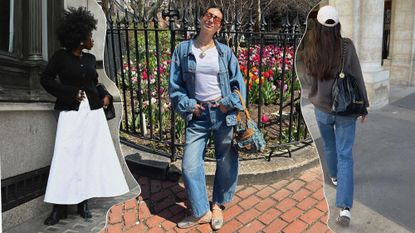Eastern Wear Pakistan: Vital Wardrobe Pieces for Every Fashion Fanatic
Wiki Article
Experience the Elegance of Conventional Eastern Clothes
Embark on a trip via the intricate globe of traditional Eastern attire, where each garment tells a tale woven with cultural richness and historic value. Join us as we untangle the keys behind these elegant items and discover the attraction of Eastern clothing that has actually mesmerized generations. eastern wear pakistan.History of Eastern Clothes
Eastern outfit has an abundant history that dates back centuries, mirroring the diverse societies and traditions of areas such as Asia and the Center East. In Asia, conventional attire varies greatly from the vibrant saris put on in India to the stylish bathrobe of Japan.Throughout history, Eastern clothing has not only offered as a form of garments but likewise as a symbol of social identity and heritage (eastern wear pakistan). Fabrics like cotton, bed linen, and silk have been frequently used, with layouts and patterns commonly holding considerable definitions or representing elements of nature or spirituality. Typical garments have been passed down via generations, with each item bring a feeling of history and tradition. Today, Eastern clothes remains to develop, mixing conventional elements with modern-day style fads to create special and timeless styles.
Significance of Embroidery
Embroidery plays an important function in standard Eastern clothing, including complex information and cultural importance to garments that have been given via generations. In Eastern societies, needlework is not simply decorative but holds deep symbolic meanings. Each stitch and pattern can share tales, beliefs, and even social status.The art of needlework in traditional Eastern clothing is a labor-intensive procedure that needs skill and patience. Very experienced craftsmens diligently hand embroider detailed layouts onto materials using techniques that have actually been improved over centuries. These stitched styles frequently mirror the abundant cultural heritage of the region they originate from, showcasing concepts influenced naturally, mythology, or historical events.

Glamorous Fabrics Utilized
Extravagant materials play an essential function in enhancing the elegance and luxury of typical clothes across diverse Eastern societies. Silk, renowned for its soft qualities and shine, is a preferred choice for numerous conventional garments because of its glamorous feel and capacity to drape gracefully. In nations like India, China, and Japan, silk has a long background of being utilized in traditional clothes, symbolizing wide range and condition.Another commonly used extravagant fabric is brocade, defined by elaborate patterns woven into the product. Brocade adds a touch of class to garments and is often seen in ritualistic clothing and formal wear. Velour, with its deluxe texture and rich look, is additionally a popular option for traditional clothes in Eastern societies, particularly for unique celebrations and festive occasions.
Furthermore, satin, fabric, and chiffon are regularly used for their light-weight and running high qualities, including a feeling of delicacy and sophistication to garments. These luxurious fabrics not only boost the aesthetic charm of typical Eastern outfit yet additionally add to the overall appeal and beauty of the user.
Craftsmanship Methods
Typical attire in different societies showcases impeccable craftsmanship methods that are passed down with generations, highlighting the ability go now and artistry associated with creating these charming garments. Each embellishment, needlework, and stitch is thoroughly crafted to develop classic pieces that embody the cultural heritage and customs of the area. The craftsmanship strategies made use of in typical Eastern clothing often entail elaborate handwork, such as hand weaving, hand needlework, and hand beading, which need precision and focus to information.Artisans who specialize in these techniques undertake years of training to best their skills and master the traditional approaches of garment building. Making use of top quality materials incorporated with professional craftsmanship causes garments that not only look aesthetically sensational but additionally stand the examination of time. The devotion to preserving these workmanship methods ensures that each item of conventional Eastern attire is a job of art, reflecting the abundant cultural background and heritage of the region.
Classic Beauty and Elegance

The elaborate needlework, delicate beadwork, and extravagant textiles made use of in typical Eastern clothing add to its exceptional appeal. The careful creation passed down with generations makes sure that every item informs a story and radiates elegance and poise.
Additionally, the classic shapes and graceful draping of traditional Eastern clothing contribute to its long-lasting appeal. The flowing lines and sophisticated designs develop a sense of consistency and equilibrium that is both visually enticing and mentally captivating.
Fundamentally, the ageless elegance and appeal of traditional Eastern outfit function as a testimony to the skill and creativity of the artisans that dedicate their lives to maintaining these charming sartorial traditions. - eastern wear pakistan
Conclusion
To conclude, the style of typical you can find out more Eastern outfit is a testament to the rich history, social value, and intricate craftsmanship of the region. From the sophisticated needlework to the glamorous materials and classic beauty, each garment narrates and reflects the cultural identity of its origins. Accepting Eastern outfit permits one to appreciate the artistry and beauty that have been given published here via generations, creating truly splendid and fascinating pieces.Embark on a journey through the intricate world of traditional Eastern clothing, where each garment informs a tale woven with social richness and historical significance.Embroidery plays an essential duty in typical Eastern clothes, including elaborate details and social value to garments that have actually been passed down with generations.Glamorous fabrics play a critical role in boosting the style and luxury of conventional attire throughout varied Eastern cultures. The workmanship methods utilized in traditional Eastern clothing usually include elaborate handwork, such as hand weaving, hand needlework, and hand beading, which need precision and focus to detail.
In conclusion, the beauty of traditional Eastern clothing is a testament to the rich background, cultural relevance, and complex workmanship of the region.
Report this wiki page